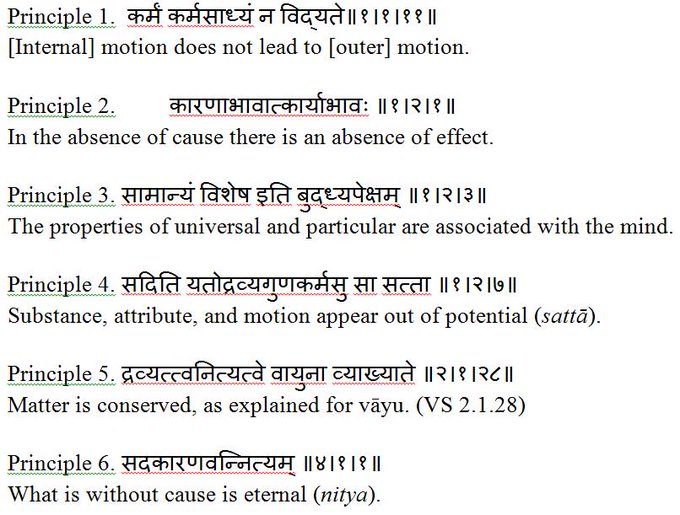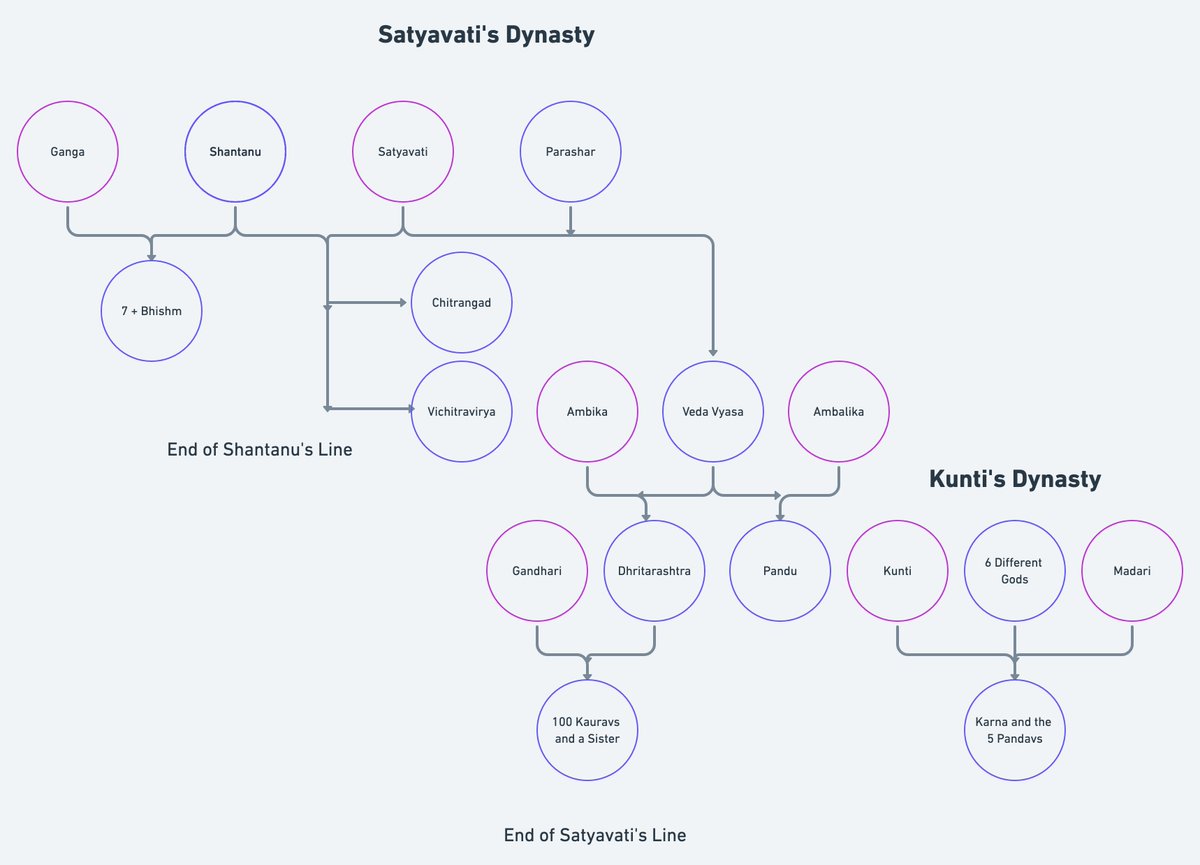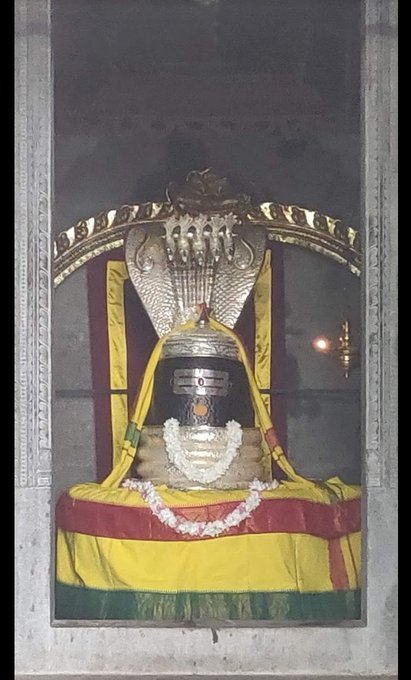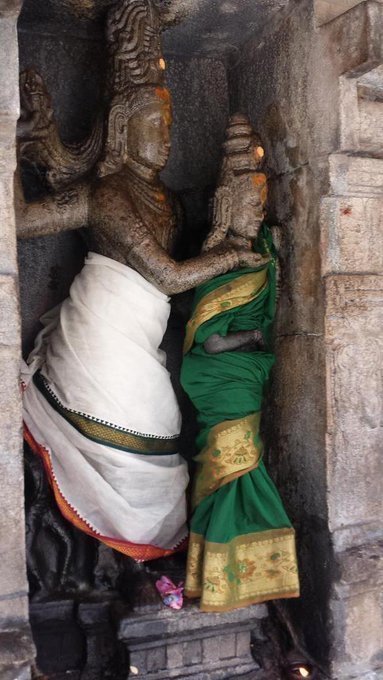Mahabharat - the great war - 18 days of heroism, deceit, blood and intrigue - now as a mega Twitter thread.
I'll add the events from a few days of the war each day.
Caveats: lots of editorialization, creative liberties and interpretations.
There will also be a lot of asides - especially around war strategy and tactics, the characters and their motivations and non-canon storylines.
Over the years, I've read multiple versions, phenomenal translations and modern retellings. So be prepared for a potpourri.
There are different ways of looking at this war. Was it a family feud? Sure - but whose family? Shantanu's or Satyavati's? Was Vyas essentially telling us his family history? And then Kunti added a twist to this tale. Here's a helpful chart:
Satyavati's two sons from Shantanu both died without children. Vyas - her first son - fathered Dhritarashtra and Pandu (and Vidur).
Pandu never fathered any children. Kunti and Madari gave birth to six demi-gods (Karna and the five Pandavs).
So Satyavati Vs Kunti and Madari.
Or was this a fight between two massive neighbouring kingdoms - the Kurus and the Panchals? While many smaller kingdoms joined the battle, most of the Pandav army (more than half of their 7 divisions) came from the Panchals. King Drupad and his son Shikhandi led two divisions.

































